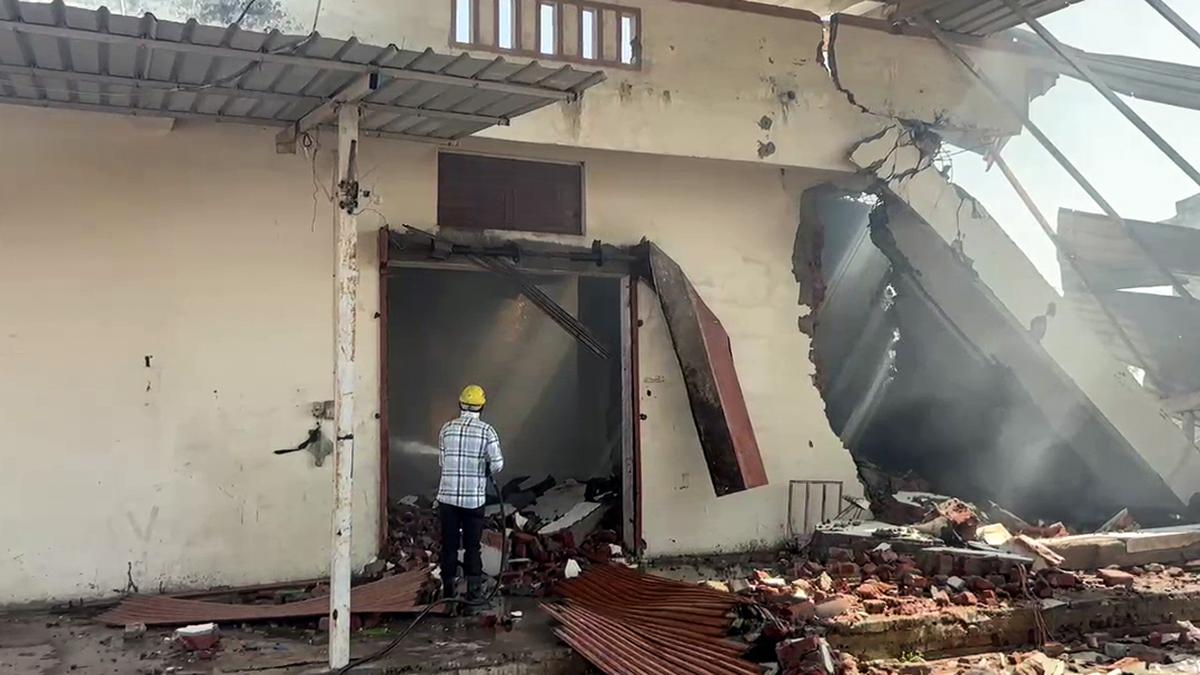
Gujarat firecracker blast: Forensic probe found aluminium powder caused explosion, say Police
The Hindu
Aluminium powder in firecrackers caused fatal explosion in Gujarat warehouse, leading to 21 deaths, arrests made, detailed investigation ongoing.
A forensic investigation has confirmed that the presence of aluminium powder, one of the ingredients to make firecrackers, caused the huge explosion and blaze which ripped through the warehouse near Deesa town in Gujarat, killing 21 persons a day ago, police said on Wednesday (April 2, 2025).
Apart from aluminium powder, a team from the forensic science laboratory (FSL) also found yellow dextrin powder from the warehouse where firecrackers were stored, Banaskantha district Superintendent of Police Akshayraj Makwana told reporters.
Though the SP admitted that both substances are used for manufacturing firecrackers, he told reporters that a detailed investigation was underway to find out whether firecrackers were manufactured in the godown or not.
The godown, where the explosion took place around 9:45 a.m. on Tuesday (April 1, 2025), is located in an industrial area near Deesa town, around 30 km from the Banaskantha district headquarters. The blast was so powerful that it sent body parts of workers flying 200-300 metres away. Family members of some of the workers who stayed on the premises were crushed to death after heavy chunks of the RCC roof slab fell on them, officials said.
Police on Tuesday (April1, 2025) night arrested warehouse owners Deepak Mohnani and his father Khubchand Mohnani from neighbouring Sabarkantha district, Mr. Makwana said, adding that an FIR was registered in Deesa against the duo.
Both of them were booked on the charges of culpable homicide not amounting to murder and under relevant sections of the Explosives Act and the Explosive Substances Act, the SP said.
"Apart from firecrackers, the FSL team found aluminium powder from the warehouse. A bag containing yellow dextrin was also found. Both materials are used in making firecrackers. The FSL told us that aluminium powder was the reason behind the explosion," Mr. Makwana said.

With the annual cost estimated to be about ₹1 crore for each child requiring treatment for ultra-rare diseases, the Medical Education Department has sought corporate support to meet the expenses. Currently, 22 children with ultra-rare diseases are undergoing treatment at Indira Gandhi Institute of Child Health (IGICH) here.





















 Run 3 Space | Play Space Running Game
Run 3 Space | Play Space Running Game Traffic Jam 3D | Online Racing Game
Traffic Jam 3D | Online Racing Game Duck Hunt | Play Old Classic Game
Duck Hunt | Play Old Classic Game










